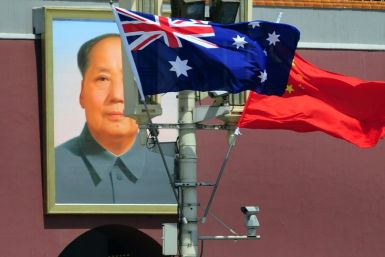Nuclear Cars: They're Not Science Fiction Anymore
Are you ready for a laser-powered nuclear car? No, it's not science fiction, but a modern concept that GE's "Txchnologist" blog calls a "thoroughly plausible idea." Actually, writer Steven Ashley (who also blogs for Scientific American) qualifies that further down by saying it has "a kernel of plausibility." General Motors apparently thinks so, too, because it showed off a similar Cadillac-based prototype in 2009.
The idea of nuke cars is not actually new: Circa 1957, Ford built a 3/8th-sized scale model of an exotic looking vehicle (huge fins) called the Nucleon (at right) that was supposed to go 5,000 miles on a radioactive "charge." Uranium fission heated a steam generator, and the steam drove turbines -- a nuclear power plant on wheels. The reactor was in the trunk, so storage space wasn't too great. What would have happened if two of these buggies had collided? The accident scene would need to be quarantined for 10,000 years.
According to Ford, "The model featured a power capsule suspended between twin booms at the rear. The capsule, which would contain a radioactive core for motive power, would be easily interchangeable at the driver's option, according to performance needs and the distance to be traveled."
It's not surprising that the Nucleon never made it to a full-sized prototype, but such was the nuclear optimism of the "too
cheap to meter" 1950s. The new car is completely different, but after Fukushima it's still going to make a lot of people nervous.
The invention of Charles Stevens of the Massachusetts-based R&D company Laser Power Systems, the system is far short of the Nucleon's full-fledged nuclear reactor. The key is thorium, which is radioactive but not on the same scale as uranium (though it can sub for it in reactors). In the proposed car, "an accelerator-driven thorium-based laser" is used not to send a
beam of energy but to generate concentrated heat.
Stevens says his thorium car would be "emissions free" and never need recharging. A gram of thorium has the same energy content as 7,500 gallons of gas, and eight grams could power a car for 300,000 miles. I'm still wondering what happens when two of these cars come together.
Cadillac's car has styling right out of Star Trek and is called the World Thorium Fuel Concept. It doesn't have any actual onboard thorium, but it theoretically could.
Stevens doesn't have a working model, either, because according to Txchnologist it's having some difficulties integrating the laser with the turbine and generator. And, my guess, he'd also have just a few minor challenges GETTING THE CAR
LICENSED. Sorry for the screaming there.
It would be great if you could create a nuclear car safely, but there are a million reasons it will never work. Look at that crazy 8.8-megawatt Russian reactor on wheels at left -- I'd be calmer driving a nitroglycerin truck through a minefield. But hope springs eternal.
According to ABC News in 2010, scientists at Los Alamos National Laboratory "have
created a long-sought molecule known as uranium nitride" that is designed to remove hydrogen atoms from carbon atoms and "extract more energy from fossil fuels, making cars more fuel-efficient, and could also lead to cheaper drugs." A few glitches there, too -- uranium nitride has to become a catalyst, and that's not scientifically possible now.
Finally, I hear that scientists at the DOE's Idaho National Laboratory announced last week that they'd put together a suitcase-sized 40-kilowatt nuke that "could power up to eight normal-sized homes," and also generate electricity for manned missions to Mars. According to MSNBC, "The team plans to build a physical demonstration unit for the plant and test out its capabilities next year."
Source: Mother Nature Network






